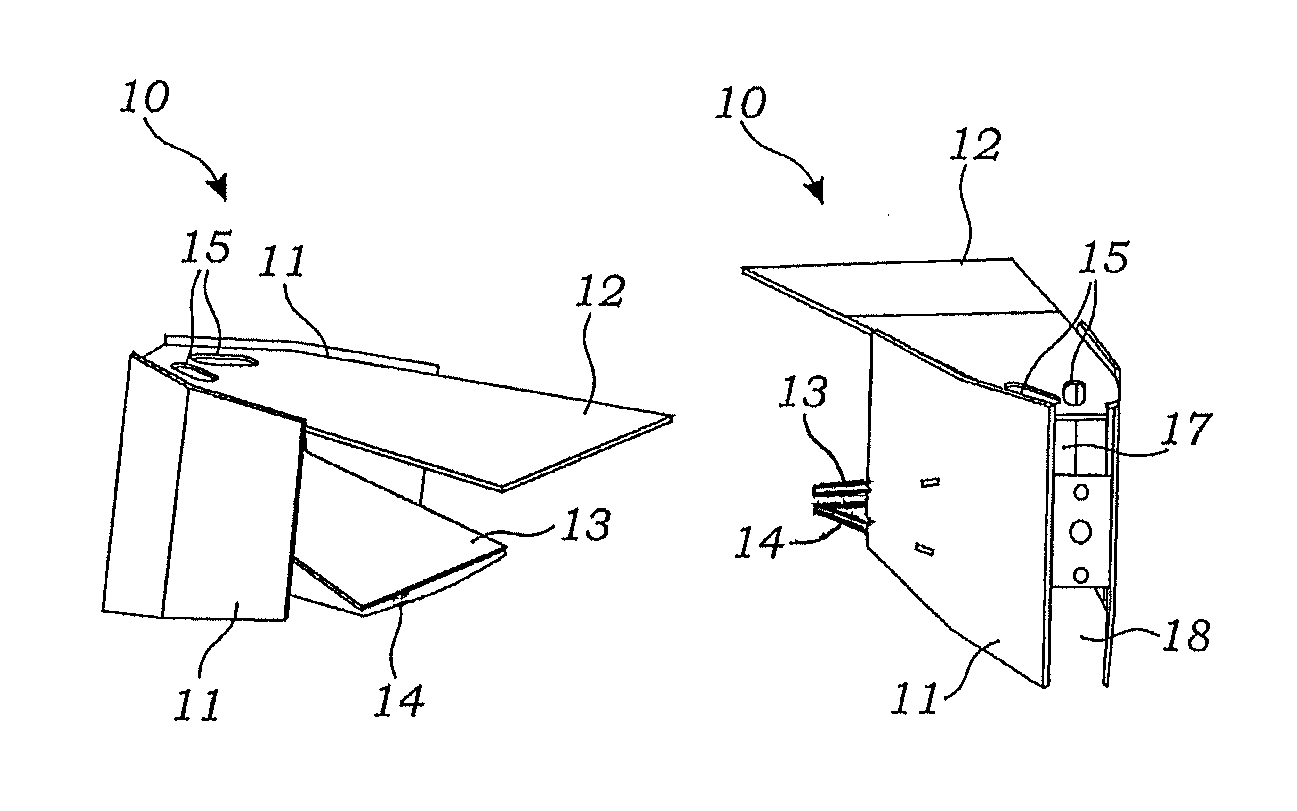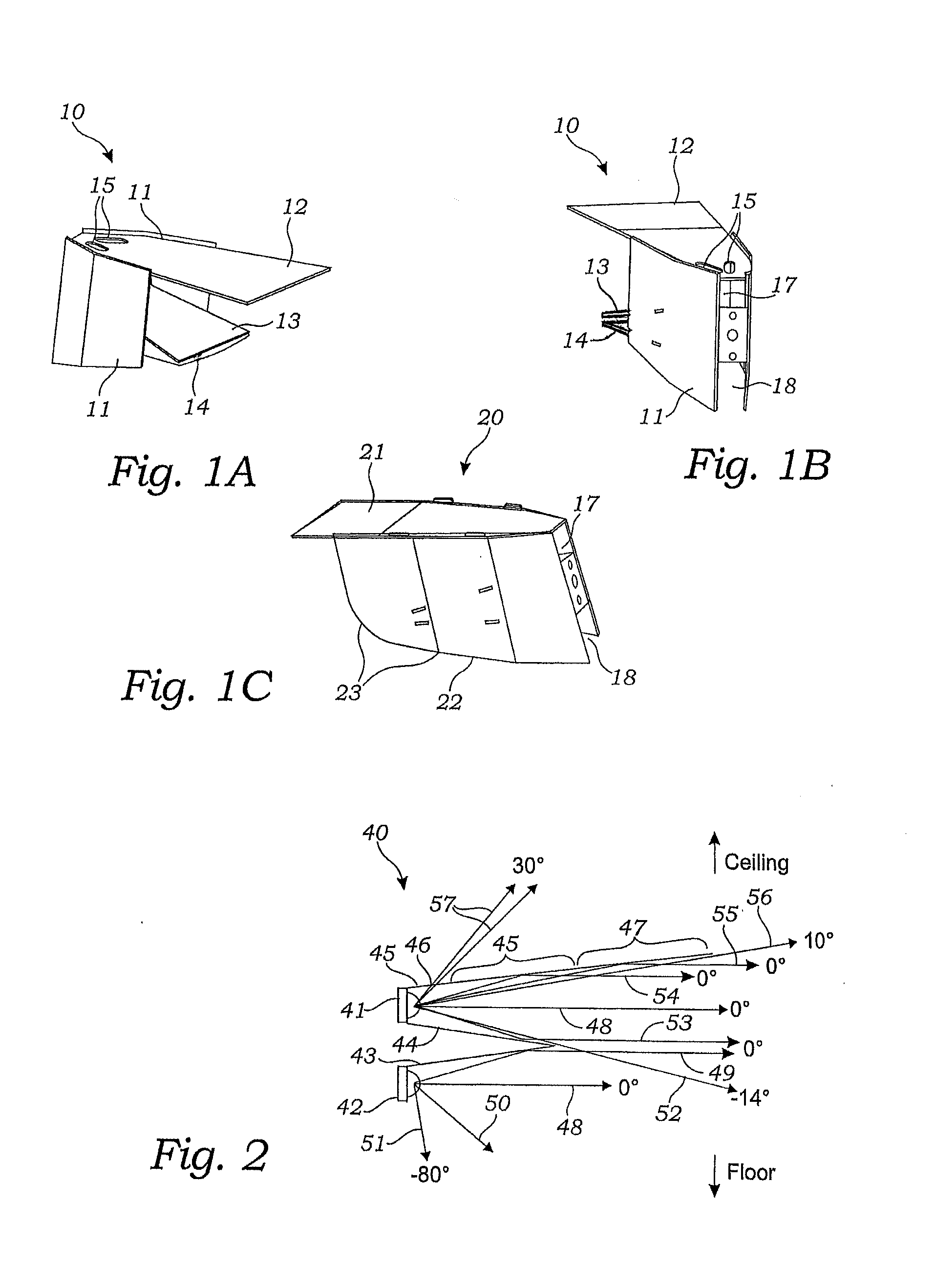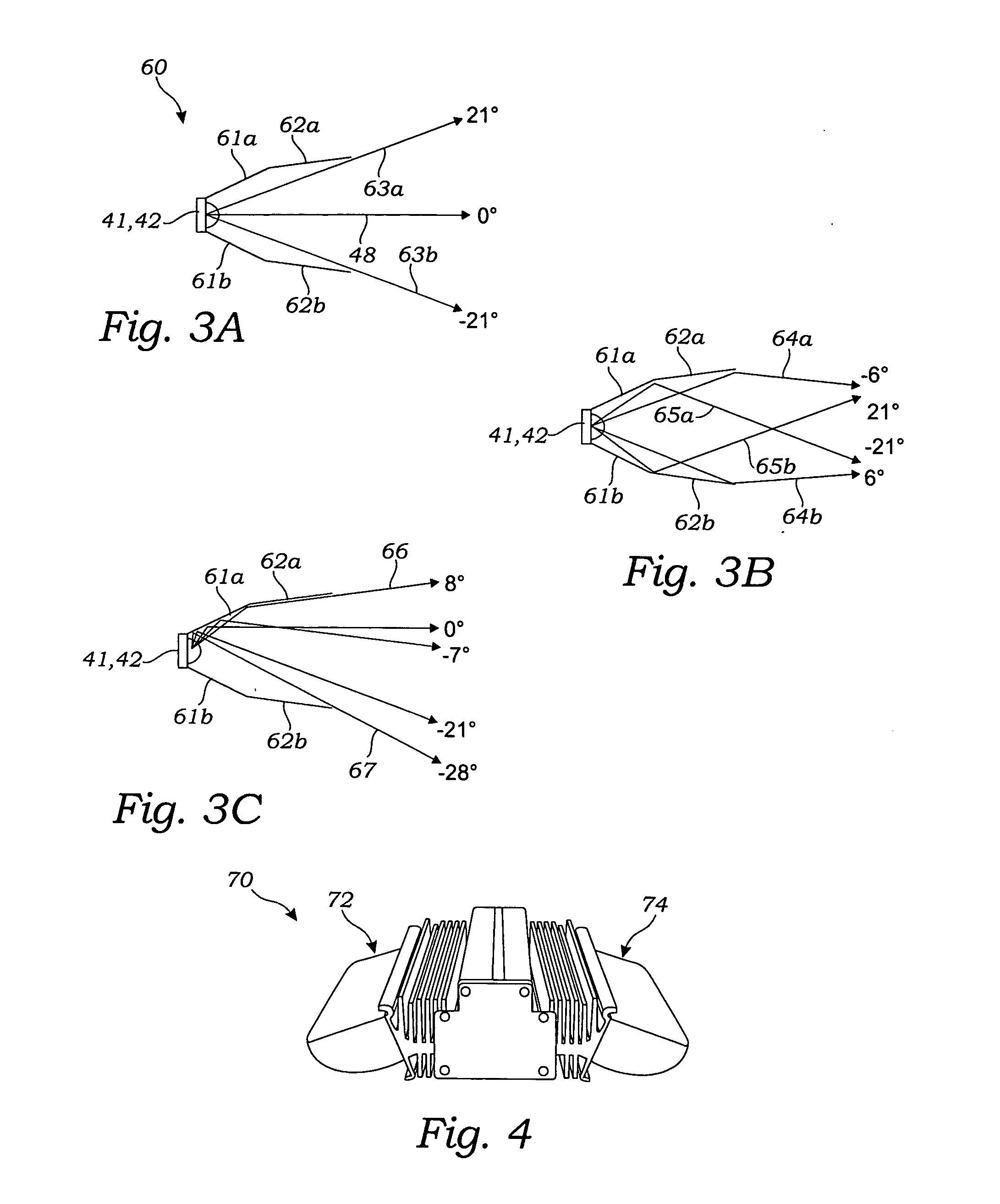Light shaping reflector system and method of manufacture and use
a technology of reflectors and reflectors, applied in semiconductor devices, lighting and heating apparatus, light source applications, etc., can solve problems such as molded optical, challenge or obsolete existing optics, and refractive designs with wide angles or multiple angles
- Summary
- Abstract
- Description
- Claims
- Application Information
AI Technical Summary
Benefits of technology
Problems solved by technology
Method used
Image
Examples
Embodiment Construction
[0040]The above described drawing figures illustrate aspects of the invention in at least one of its exemplary embodiments, which are further defined in detail in the following description.
[0041]Turning first to FIGS. 1A-1C, there are shown exemplary embodiments of the reflector of the present invention. In FIGS. 1A and 1B, an exemplary parking garage reflector 10 is shown from the right and the rear, respectively, and in FIG. 1C, a side perspective view of a streetlight reflector 20 is shown. Referring to FIG. 1A there are shown side vanes 11 that wrap around a top vane 12, an upper intermediate vane 13 and a spaced apart lower intermediate vane 14 to form the reflector 10. The upper slots 15 formed in the top vane 12 allow some light to pass upward from at least the upper LED 41 (FIG. 2) toward a ceiling (not shown), more about which is explained below. In FIG. 1B of the rear of the reflector assembly 10, there is again shown the side vanes 11, which can now be seen as having a sp...
PUM
 Login to View More
Login to View More Abstract
Description
Claims
Application Information
 Login to View More
Login to View More - R&D
- Intellectual Property
- Life Sciences
- Materials
- Tech Scout
- Unparalleled Data Quality
- Higher Quality Content
- 60% Fewer Hallucinations
Browse by: Latest US Patents, China's latest patents, Technical Efficacy Thesaurus, Application Domain, Technology Topic, Popular Technical Reports.
© 2025 PatSnap. All rights reserved.Legal|Privacy policy|Modern Slavery Act Transparency Statement|Sitemap|About US| Contact US: help@patsnap.com



